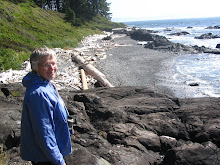At our recent family birthday party, we were discussing the
H1N1 flu. Mom mentioned the
Spanish flu. I don't know much about it except it was a long time ago and many Canadians died. Mom said that it happened at the end of
World War One when the soldiers brough
 Image by Getty Images via Daylife
Image by Getty Images via Daylife
t it back with them from Europe. The flu was quite widespread in Europe but no one was telling the folks back in
Canada. The media controls weren't quite as stringent in Spain so that is where the story first broke. That is why this flu is called the Spanish flu.
Unfortunately the soldiers were not quarantined in Europe but were returned home to Canada. They went all across Canada, taking the Spanish flu with them. This is what I learned from my Mom. (I'm actually going to phone her and ask her to comment on this blog post. I'm sure I've gotten some of my facts wrong.)
Are there any lessons for us with the H1N1 flu possibly causing a world epidemic of illness and death? (See Amy Bowllan's blog post at
http://www.schoollibraryjournal.com/blog/620000062/post/180046818.html for her ideas about how to prepare ourselves as teachers or school systems.) What struck me was that with the Spanish flu, people were kept in the d
 Image via Wikipedia
Image via Wikipedia
ark. With H1N1 flu we have received so many updates that it is almost like H1N1 fatigue so we're not taking this threat seriously. With the Spanish flu, people were kept ignorant and isolated so that perhaps they did not take the precautions we might take today. We obviously have much better communications systems today--they probably had telegram, letters, and telephones for personal communications. Did the soldiers in Europe have the opportunity to communicate with their families back home about the flu? Did they even know it was an epidemic? How should we be using the excellent information flow that we are part of to combat the threat of H1N1?
 Image by Getty Images via Daylife
Image by Getty Images via Daylife Image via Wikipedia
Image via Wikipedia![Reblog this post [with Zemanta]](http://img.zemanta.com/reblog_e.png?x-id=91fe4b63-5aae-45e9-9b95-d174cb8ada8a)





No comments:
Post a Comment